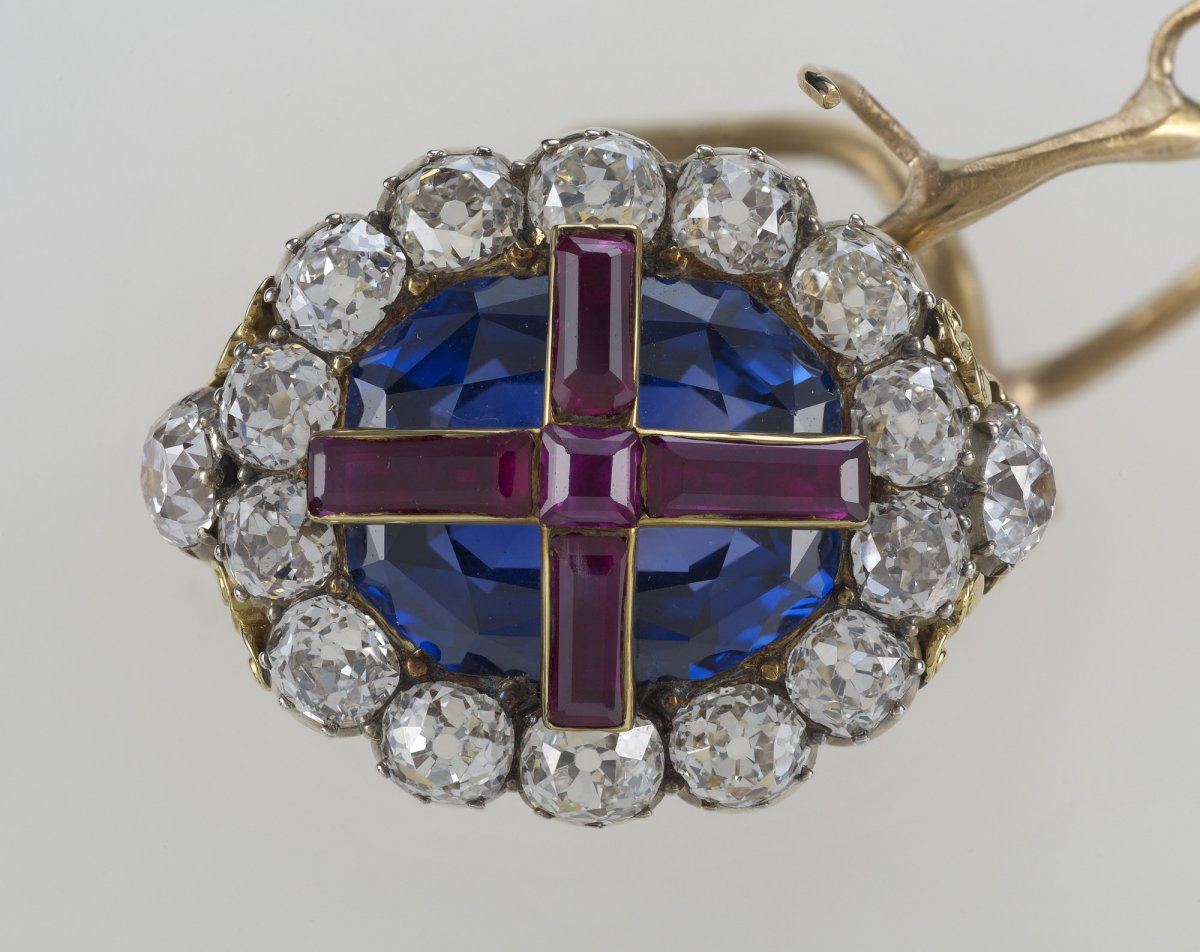
When a British monarch is crowned, he or she is making an immense commitment to serve the nation and its people. It’s fitting, then, that part of the service involves the placing of a ring on the sovereign’s hand. Today, we’ve got a closer look at three of the coronation rings in the crown jewel collection: the Sovereign’s Ring, Queen Victoria’s Coronation Ring, and the Queen Consort’s Coronation Ring.
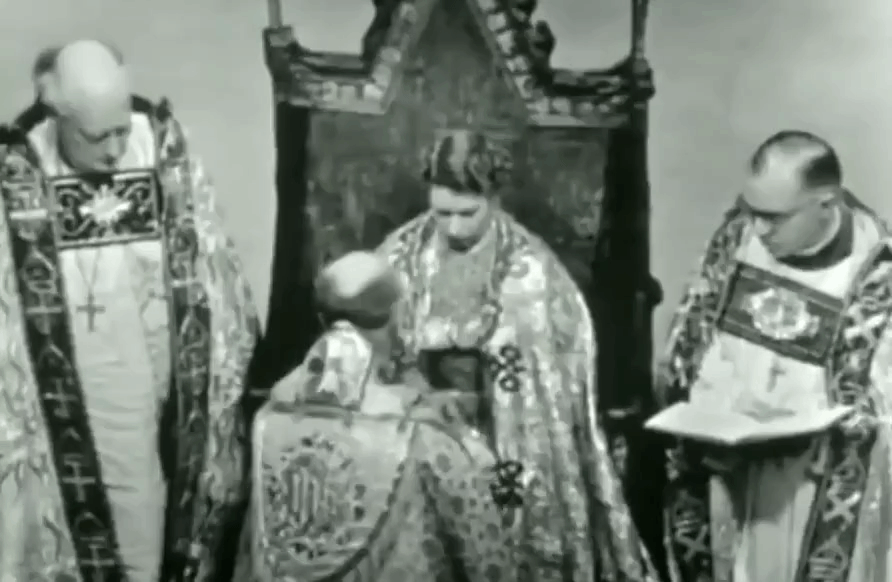
In the midst of the Queen’s coronation ceremony, held at Westminster Abbey 68 years ago today, the Archbishop of Canterbury stepped forward and placed a ring on the fourth finger of her right hand. As he stepped back, he said, “Receive the ring of kingly dignity and the seal of Catholic faith, and as thou art this day consecrated to be our Head and Prince, so may you continue steadfastly as the defender of Christ’s religion, that being rich in faith, and blessed in all good works, you may reign with Him who is the King of Kings, to whom be the glory forever and ever. Amen.”
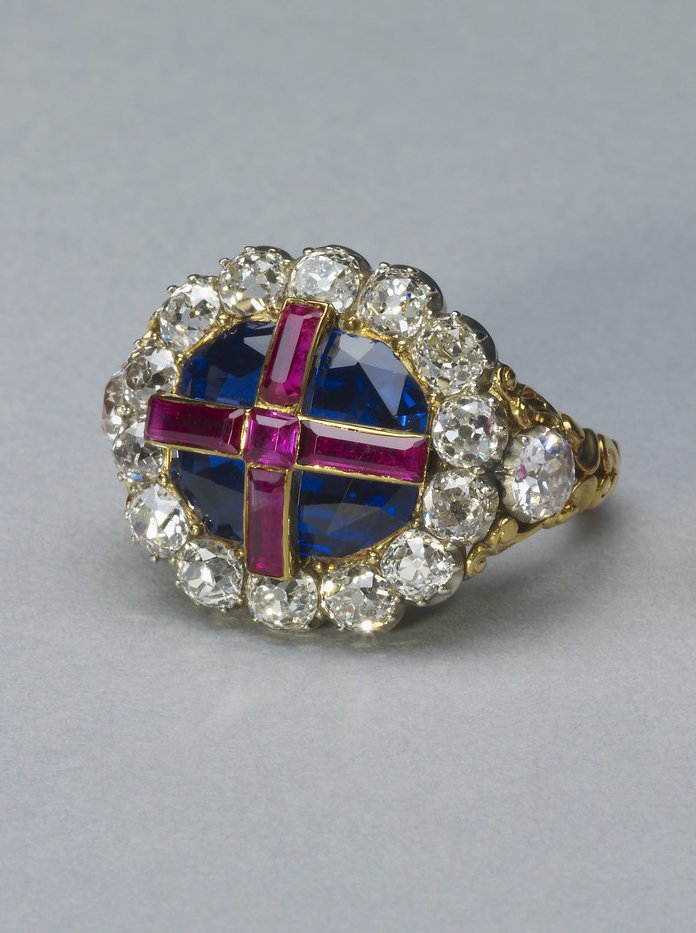
The ring placed on the Queen’s hand was the Sovereign’s Ring. Made by Rundell, Bridge & Rundell in 1831 for the coronation of King William IV, the ring features a large sapphire and diamond cluster with baguette-cut rubies in the form of a cross affixed to its surface. The ring’s design echoes the national flag, with the rubies representing the cross of St. George (for England) and the sapphire representing the Scottish flag. Two more diamond brilliants are set in the shoulders of the ring, which was first worn by William IV for his coronation.
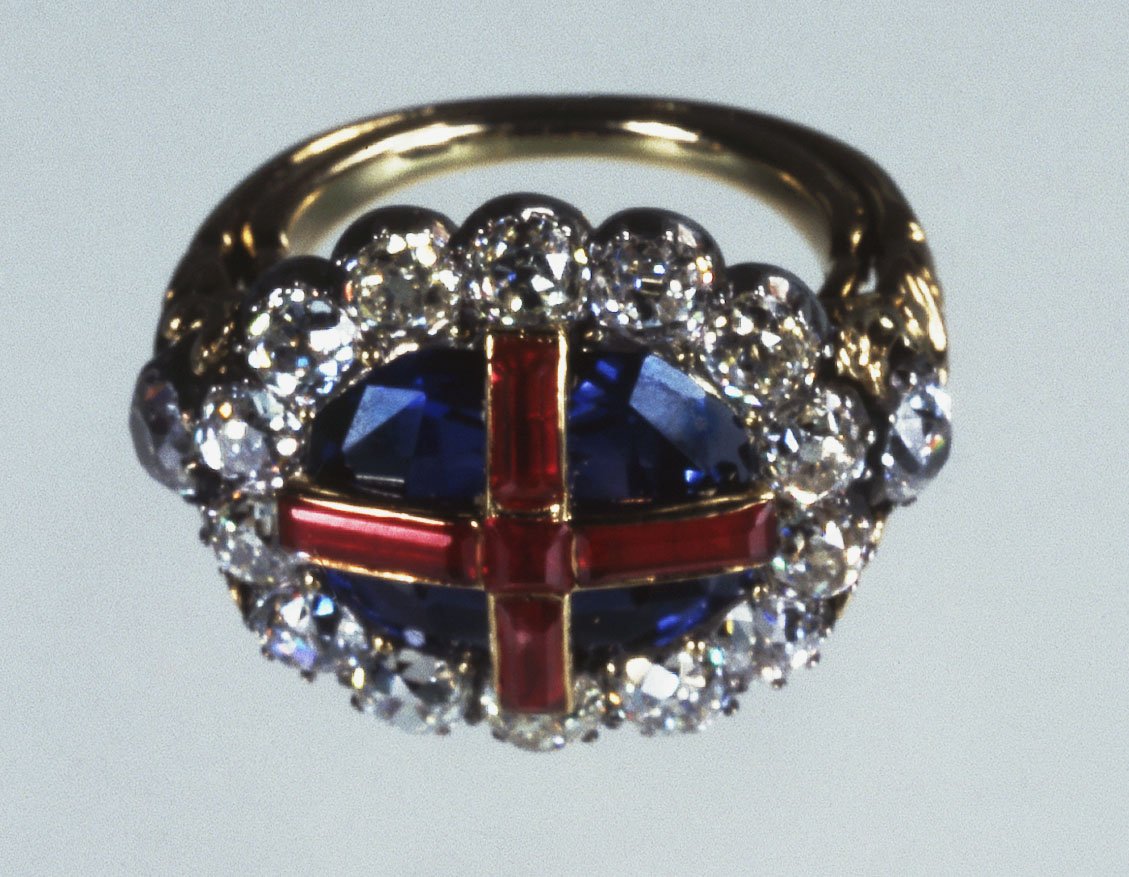
The coronation ring is sometimes called the “wedding ring of England.” Historian Anna Keay notes, “When asked about her failure to take a husband, Elizabeth I pointed to her coronation ring and said she was married to the realm of England.” For centuries, a new coronation ring was made for each sovereign to wear and keep as a personal possession. Few of the older rings survive, though many believe this one was used by King Charles II in 1661. The practice of making new rings for each coronation ended in the 1830s, and for more than a century, the Sovereign’s Ring made for William IV has been used by each new monarch.
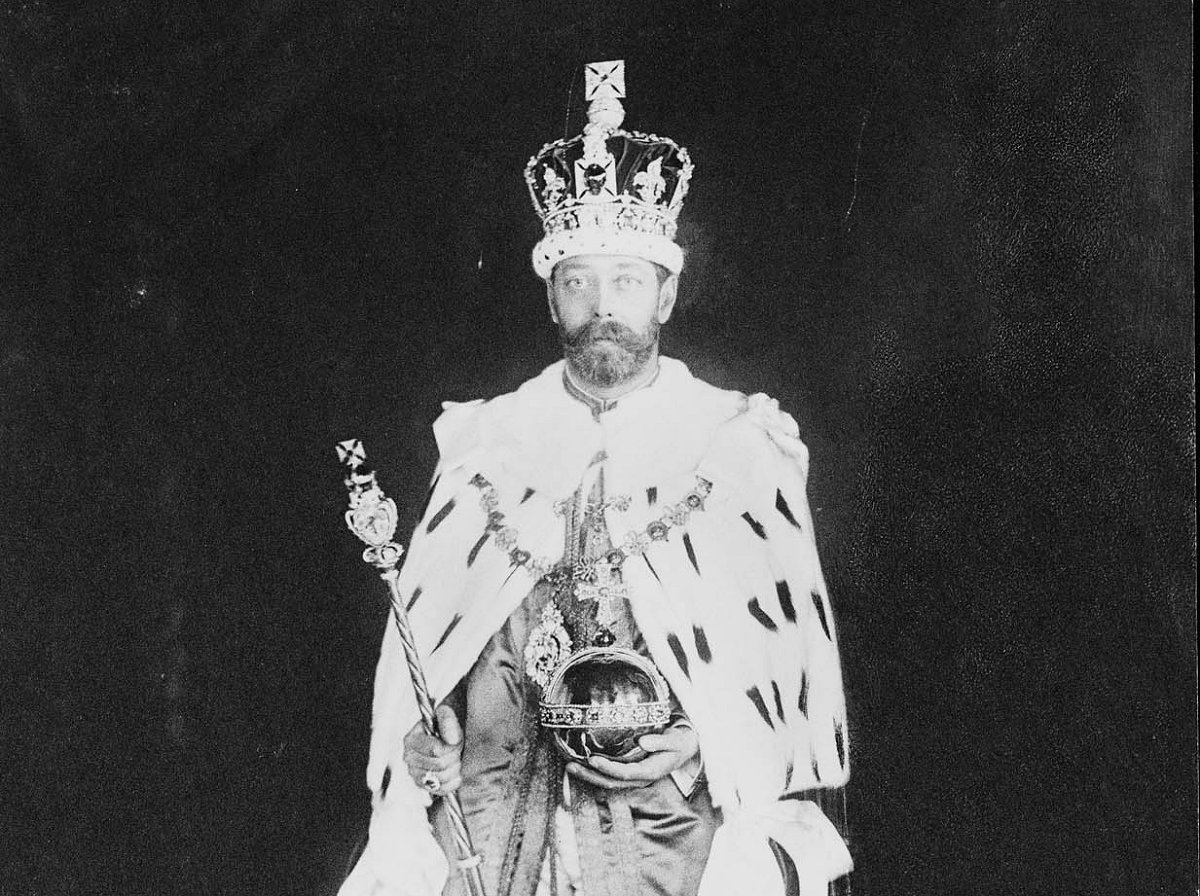
With one exception (which we’ll get to in a minute), the Sovereign’s Ring has been used at every British coronation since 1831. Above, you’ll spot the ring on the right hand of King George V after his coronation in 1911.
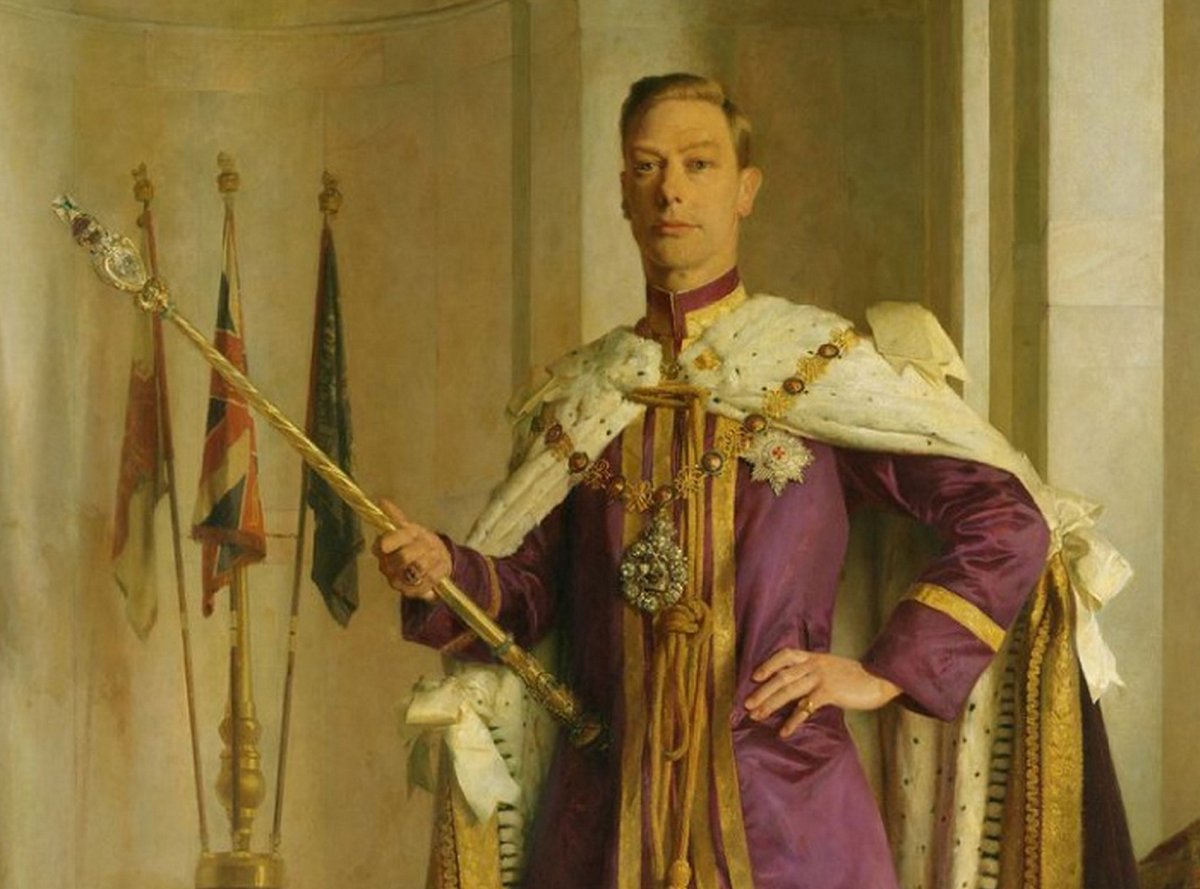
You’ll also be able to find the ring on King George VI’s right hand in this official portrait, painted after his coronation in 1937.
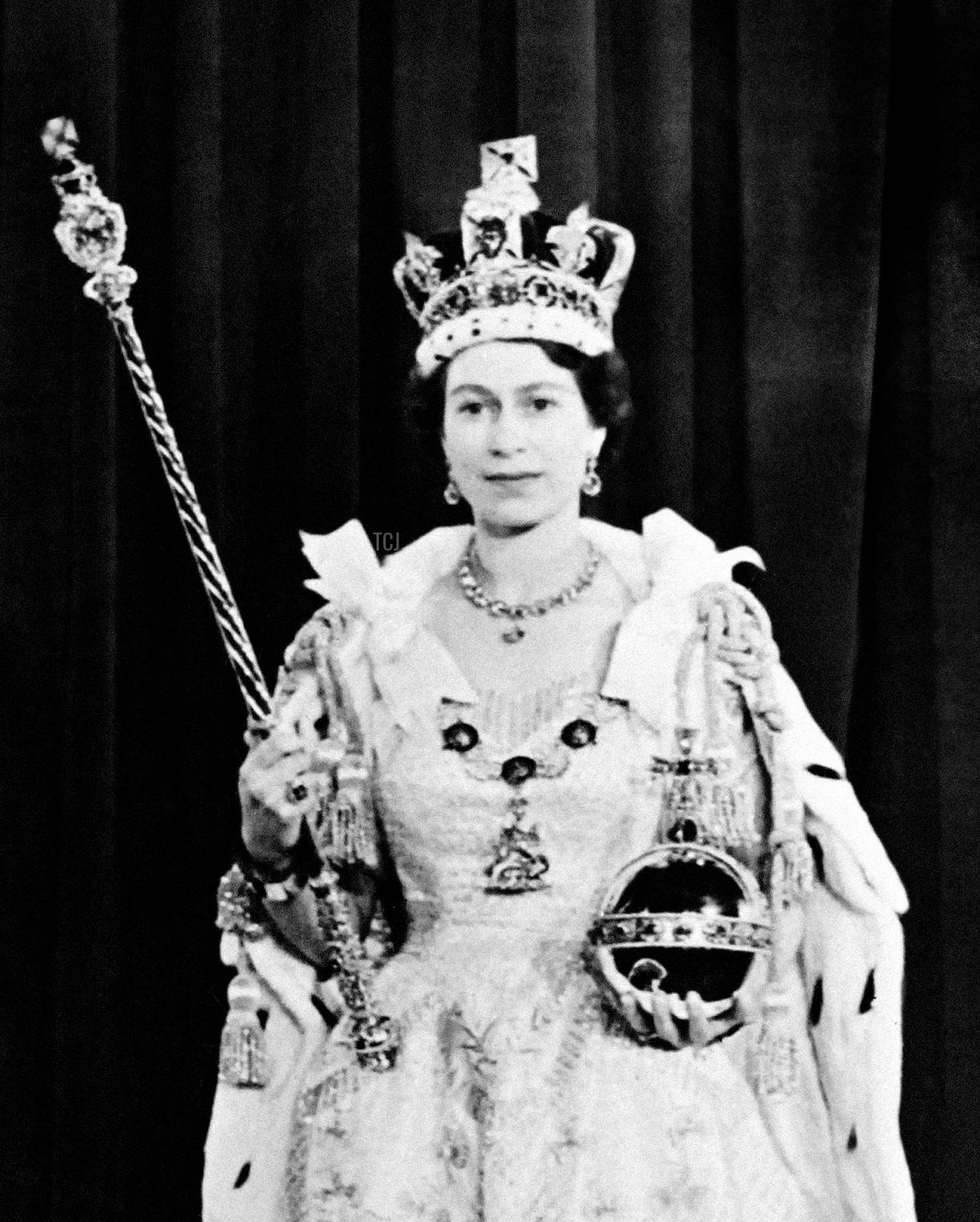
And the ring is also visible on the right hand of Queen Elizabeth II in this photograph, taken after her coronation on June 2, 1953.
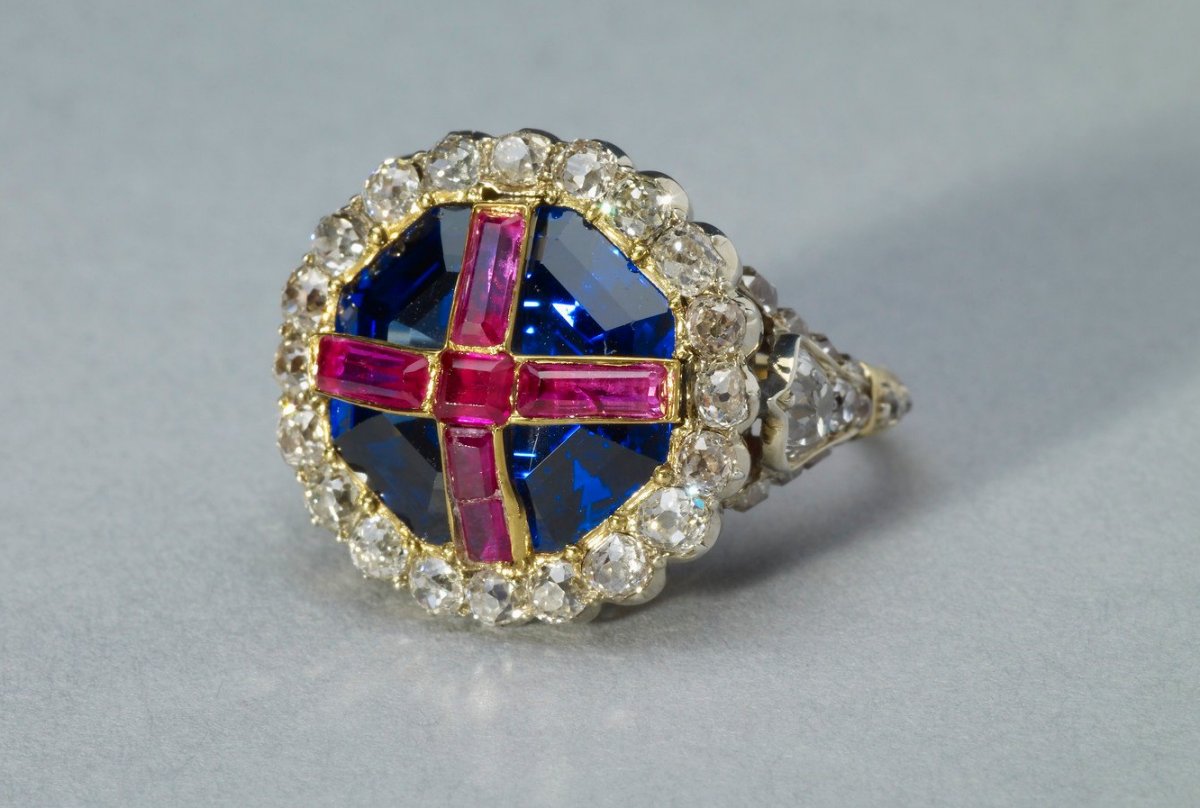
In 1837, when King William IV died, he was succeeded by his niece, Queen Victoria. As preparations began for her coronation, it was discovered that the Sovereign’s Ring (and most of the rest of the crown jewels) were far too big for her to use. A new ring, Queen Victoria’s Coronation Ring, was made just for her. It is designed to look very similar to the Sovereign’s Ring, just on a much smaller scale.
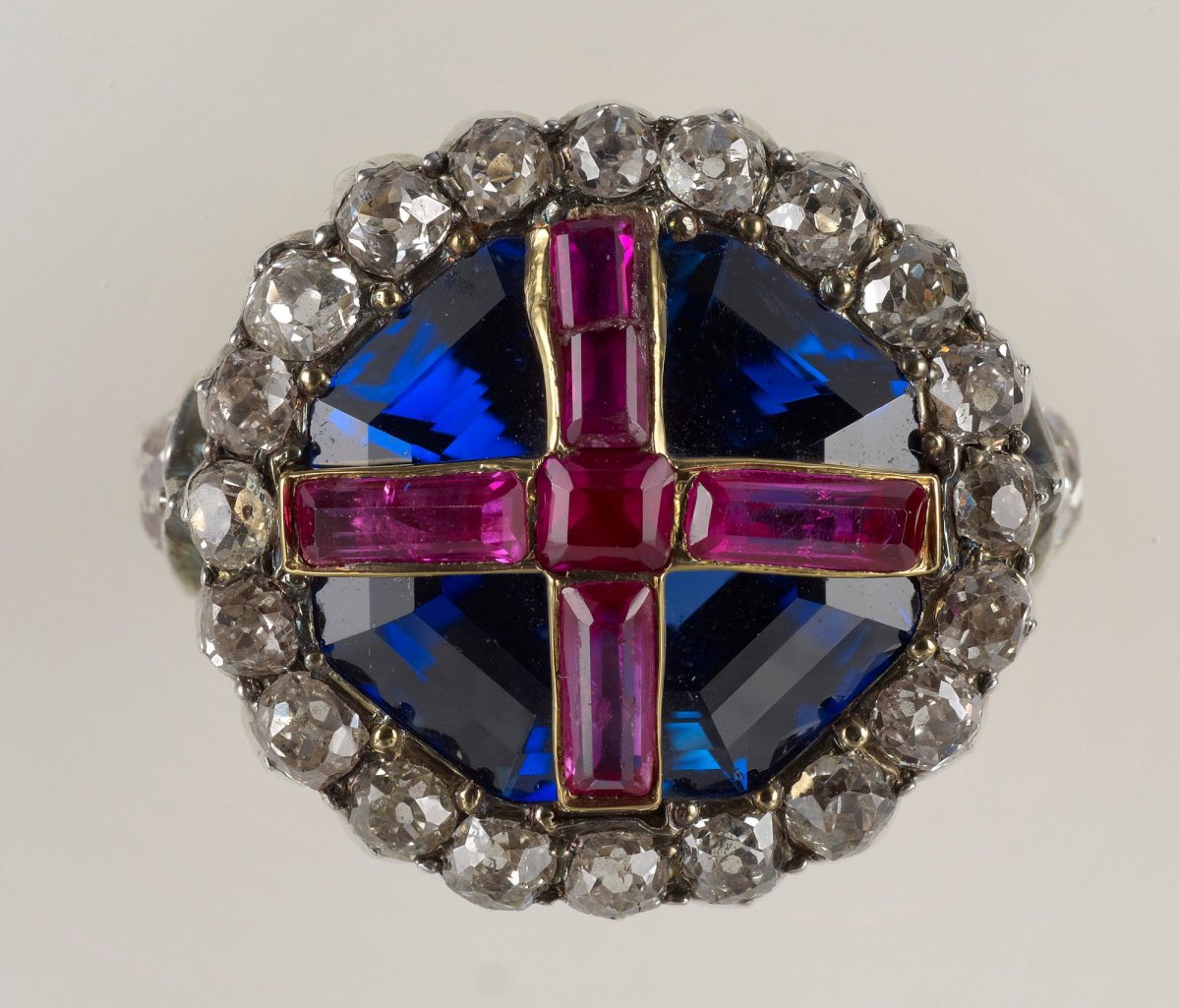
As it turned out, the scale of the new ring ended up being too small. The jewelers of Rundell, Bridge & Rundell misunderstood their assignment slightly, and they made the ring to fit Victoria’s pinky finger, not her fourth finger. But during the service, the Archbishop of Canterbury forced the too-small ring on to her fourth finger anyway, causing swelling and a great deal of pain. The Royal Collection notes that Victoria had soak her right hand in ice water after the ceremony in order to get the ring off. She noted in her journal, “I had the greatest difficulty to take it off again, – which I at last did with great pain.”
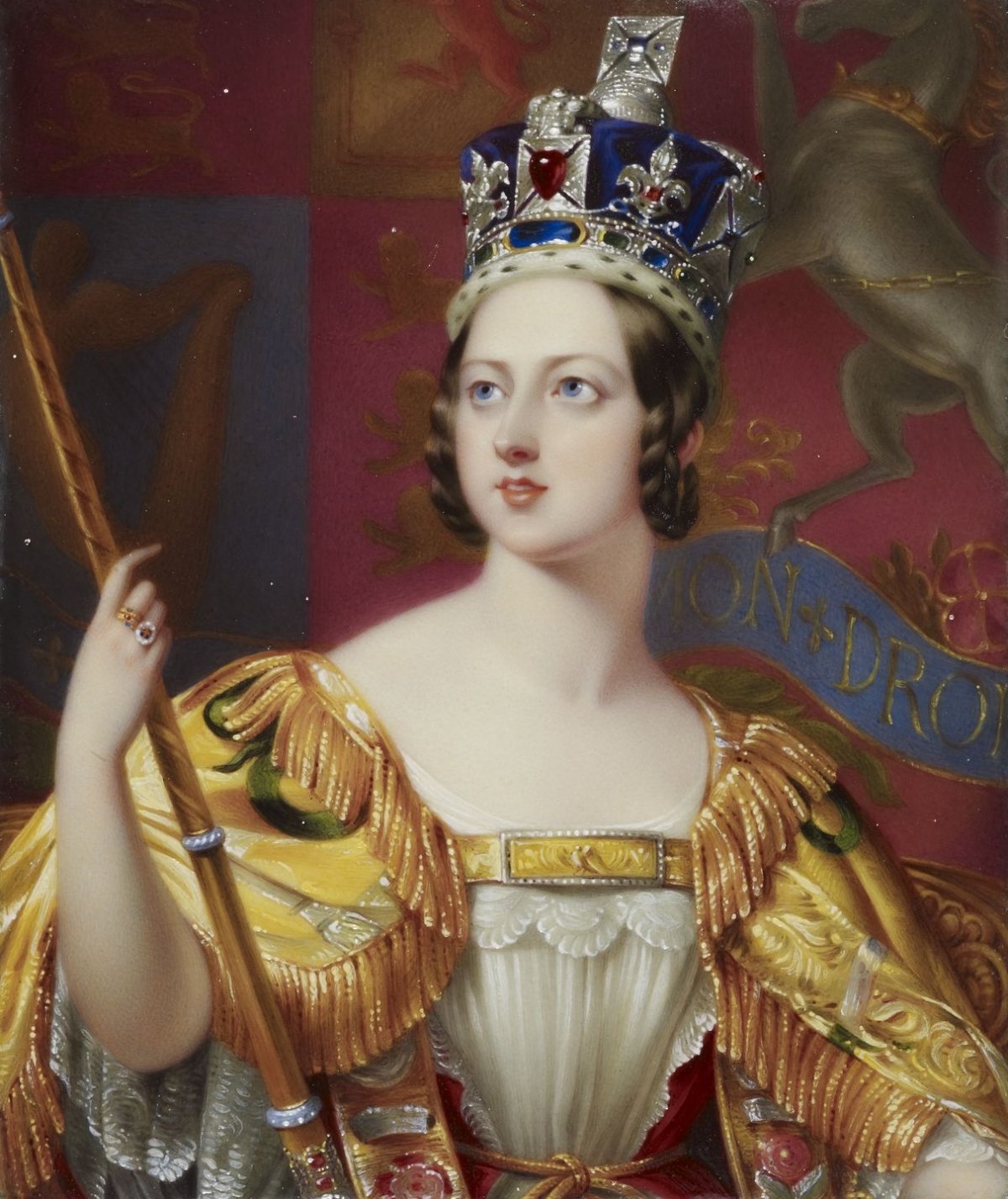
You’ll spot Queen Victoria’s Coronation Ring on the fourth finger of her right hand in this miniature portrait, based on George Hayter’s official 1838 coronation portrait. In 1849, Queen Adelaide bequeathed William IV’s Sovereign’s Ring to Victoria, and she in turn left both rings to her son, King Edward VII, in 1901. King George V had the rings placed in the crown jewel collection at the Tower of London in 1919.
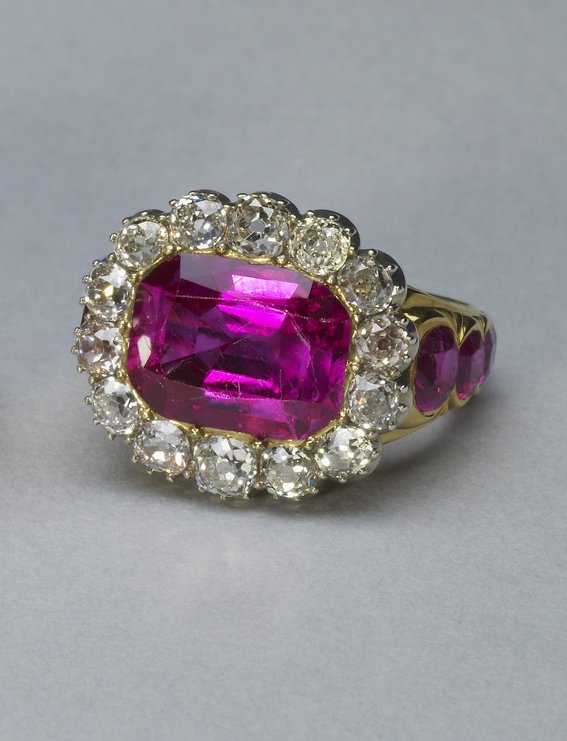
There’s a third jewel that was also included in that collection of coronation rings, passed down from Queen Adelaide and now residing in the Tower of London. A separate coronation ring was usually made for the queen consort. Adelaide’s ring, usually just called the Queen Consort’s Coronation Ring, was also made in 1831. It featured a bright pinkish-red ruby set in a cluster of diamonds, with additional rubies set in the ring’s gold band.
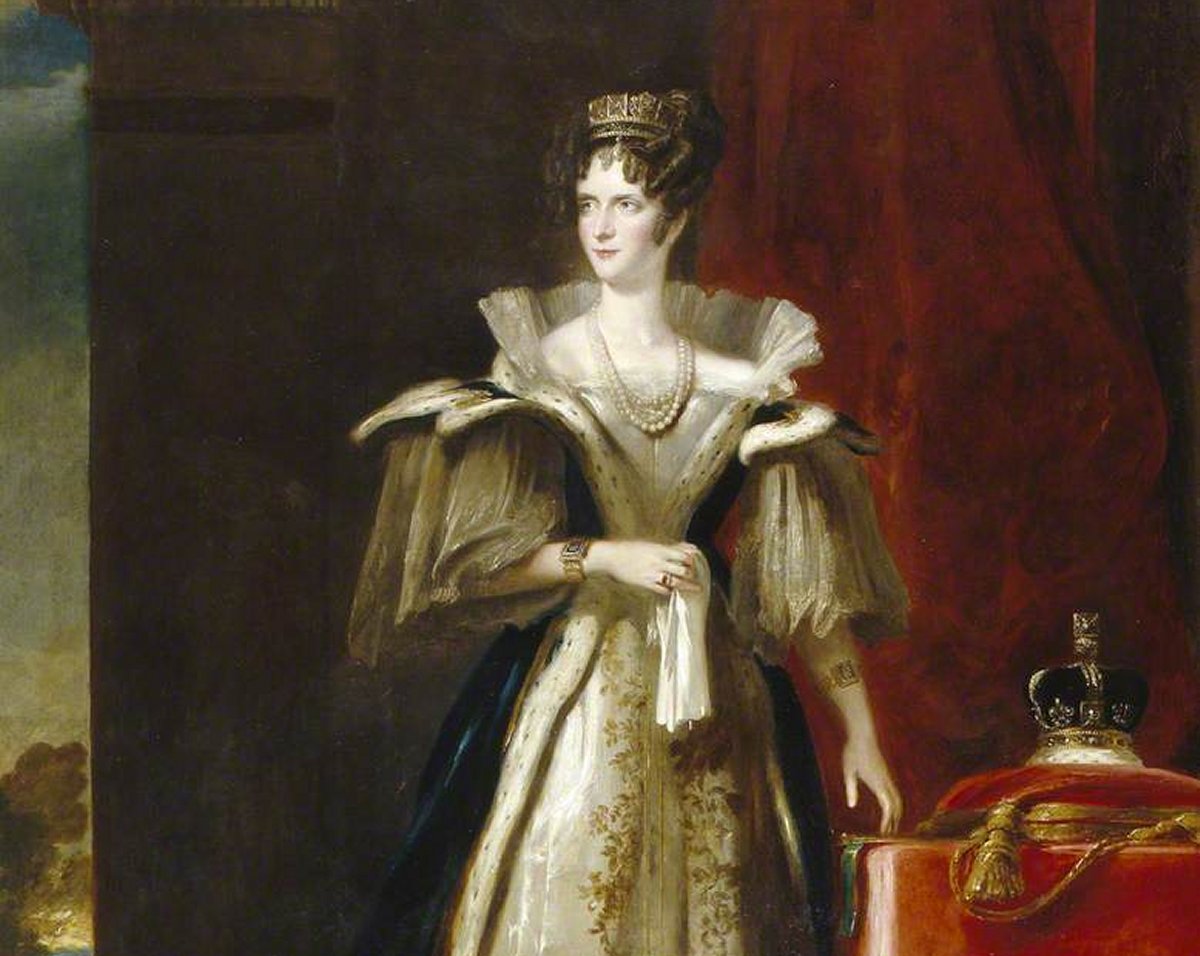
Queen Adelaide was the first queen consort to wear the ring; you’ll be able to spot it on her right hand in this portrait, painted by John Philip Simpson in 1832. (She also appears to be wearing the George IV Diamond Diadem in the portrait.)
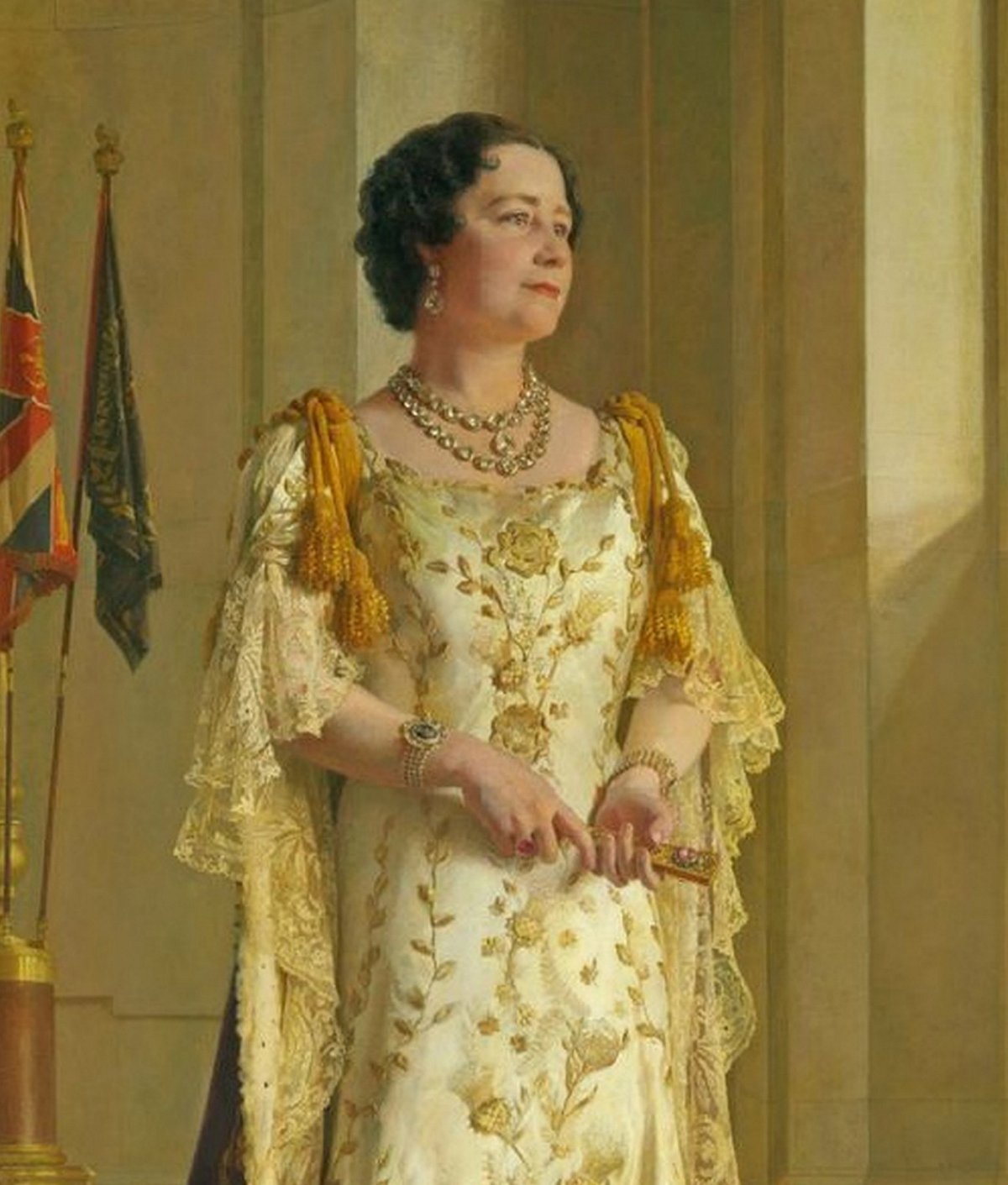
Every queen consort in Britain has worn the ring for her coronation since Adelaide’s time: Queen Alexandra in 1902, Queen Mary in 1911, and Queen Elizabeth in 1937. You’ll note the ring on Elizabeth’s right hand in this detail from her official coronation portrait. Today, all three rings—the Sovereign’s Ring, Queen Victoria’s Coronation Ring, and the Queen Consort’s Coronation Ring—are part of the crown jewel display at the Tower of London. There, the Sovereign’s Ring and the Queen Consort’s Ring wait for the moment when they will be brought out and used for a coronation once again.
Leave a Reply
You must be logged in to post a comment.